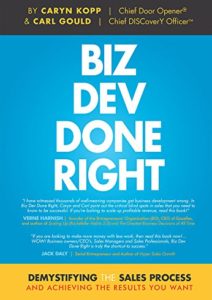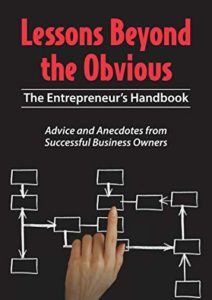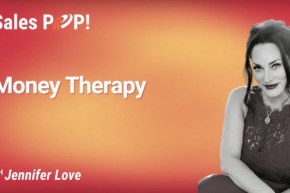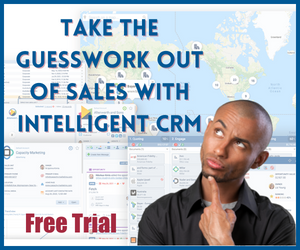Do you know how to open doors in sales? Perhaps you’ve got a good grip on the sales process. You have your elevator pitch, you’ve worked on boosting charisma and conversation skills, and you put in the time to go above and beyond for your clients. You can’t utilize all of these skills you’ve worked hard on crafting if you can’t open the door and get new clients. Caryn Kopp, interviewed by John Golden, teaches you some practical steps to open doors in sales.
In this expert sales interview, learn how to open doors by:
- Understanding door opening
- Seeking out the right clientele
- Key targeting criteria
- Creating an alluring sales language
What is door opening in sales?
Door opening in sales is the beginning part of the sales process. It involves creating a relationship with the right person. This is usually someone that you don’t know but would like to get to know. You want to spark this person’s interest, and want them to get to know you too, at least enough to schedule a meeting with you. Despite its importance, door opening can be one of the most challenging parts of a salesperson’s job.
Open Doors for the Right People:
It’s evident that opening doors for new clients is essential. Without the ability to open doors in sales, you probably won’t be able to build your client base sufficiently. But how do you know who to open doors for? “People often target the wrong person,” said Kopp. “About 25% of anyone salesperson’s prospect list shouldn’t be there. They’re targeting the wrong people.” This is a big problem, and a huge time waster, especially for salespeople who don’t have a lot of time. If you target the wrong person, to begin with, there’s no point in doing any of the rest of the sales process.
Targeting Criteria:
To ensure you’re not wasting time, and are opening doors for the right people, there are specific criteria that can help identify your target market. Most companies focus only on the basics, like the size of the company, the level of the decision maker, and geography. But there’s a lot more to it than just that, especially if you want to narrow the playing field to prospects that are going to say “yes” sooner than others.
The three questions to ask yourself to identify the perfect target market are:
-
- For whom are you the obvious solution, or the only solution? Have every one of these people on your list of leads.
- Who will willingly pay for what you have? You don’t want to waste your time trying to convince people to change their minds when you could spend time with people who will pay what you’re asking.
- Do these prospects feel urgency around having a conversation with you and taking the next steps?
Sales Message:
So you’ve identified your target audience. Now what? This is where the sales message comes in. “You want to develop a compelling and emotionally sticky sales language,” said Kopp. “What do you say to an individual to have them thinking, ‘huh, even though I already have a solution in place, and I know three other people that can do what I need, I want to have a meeting with this person because, based on what they said, I think they could be better than the others.’” Composing a winning sales message can be difficult, though. To find a few components for your spiel, try contacting several of your previous A-level clients. Ask them what was going on in their company environment when they felt the need to schedule a meeting. Also, ask them what it was that made them want to have a conversation with you. Use these “golden nuggets” of information to help develop your sales language.
About Our Host
John is the Amazon bestselling author of Winning the Battle for Sales: Lessons on Closing Every Deal from the World’s Greatest Military Victories and Social Upheaval: How to Win at Social Selling. A globally acknowledged Sales & Marketing thought leader, speaker, and strategist. He is CSMO at Pipeliner CRM. In his spare time, John is an avid Martial Artist.
Pipeliner CRM empowers salespeople to know who to approach and what to say. Get your free trial of Pipeliner CRM now.










Comments